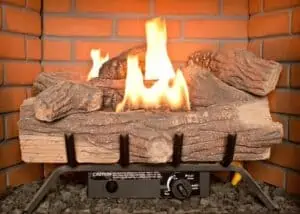How to Repair a Fireplace Firebox?
A fireplace firebox is one of the most important parts of a chimney. It is made of firebricks and mortar and is directly exposed to the flames of your fireplace. Over time, your firebox may develop a number of problems, which can affect the function of your chimney and your home’s overall safety. These problems can lead to water leaks, erosion of the masonry, and stray sparks entering the house. While there are ways to repair these problems, they are often expensive and require the expertise of a chimney professional.
(Looking for free standing gas fireplace repair? Contact us today!)

One of the most common causes of firebox problems is water damage. Water intrusion can take place through several entry points, including cracks in the firebricks and mortar joints. When these areas become damaged, they can allow toxic gases and stray sparks to enter the house. Even small gaps can let dangerous gases escape, and they can also make it easier for a stray ember to ignite a wood beam.
You can use special refractory caulk to seal gaps, but this is only a quick fix and should only be used on small repairs. In order to be effective, caulk must be pushed into the gaps as deeply as possible. Make sure the caulk is cut to fit the manufacturer’s specifications.
Repointing is another way to repair your fireplace’s firebox. This process involves replacing the mortar between the bricks with a different type of mortar. The mortar must be high-temperature refractory in order to provide the firebox with the proper protection. If you have a firebox that has been constructed with refractory mortar, it is likely that your mortar will begin to crack over time. However, you can easily correct this problem by reapplying new mortar.
You should also be aware that water and heat can cause a number of other problems in your firebox. For example, lime weeping occurs when water comes into contact with the bricks and mortar. This leads to stalactites and a white residue on the surface of the bricks.
Other problems include missing chimney caps, defective flashing, and cracked bricks. In order to avoid these problems, you must clean your fireplace and damper regularly. Also, you should inspect your firebox on a regular basis to find out if it needs to be repaired. Your chimney sweep will also be able to tell you if your firebox needs repairs.
A good time to do this is before a major renovation. During this time, you can also check your roof for damage. Besides, a rebuilding project can give you an opportunity to rethink your fireplace design.
Depending on the level of damage, your firebox may need to be rebuilt. Whether you opt to have it replaced entirely or just get the cracks fixed, you can be assured that you are doing the right thing. By repairing your firebox, you are not only keeping it safe, you are also reducing the cost of heating your home.
Regardless of whether you choose to rebuild your fireplace or just repair the firebox, you should always remember to keep it tidy. Doing so will prevent black soot stains from building up.

